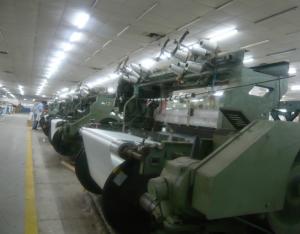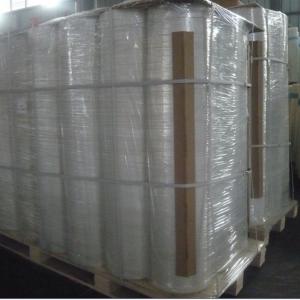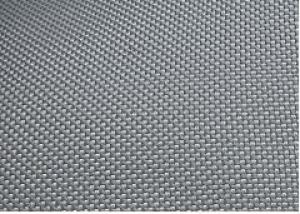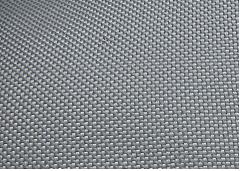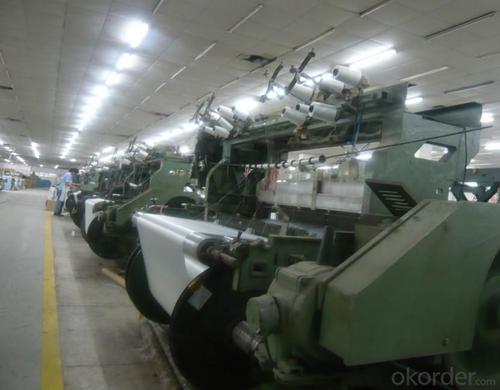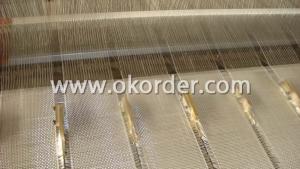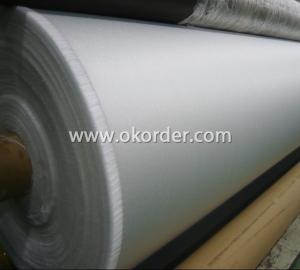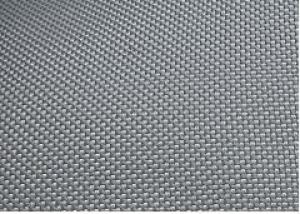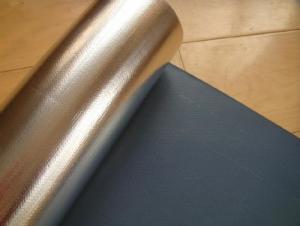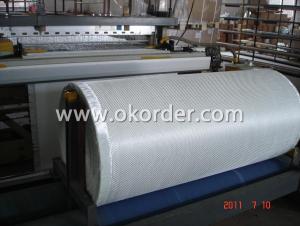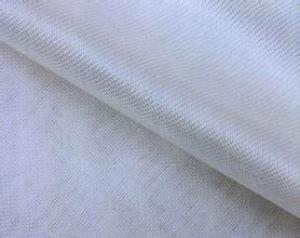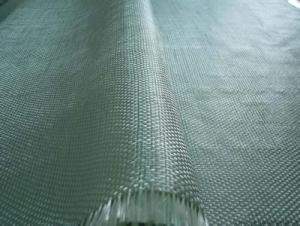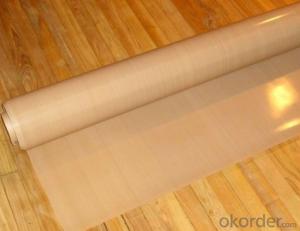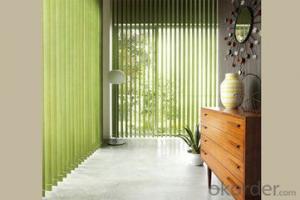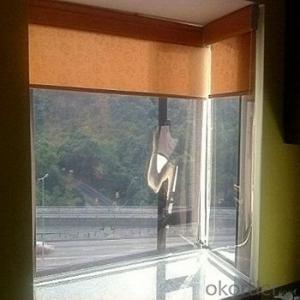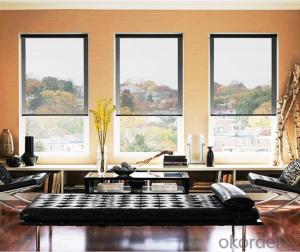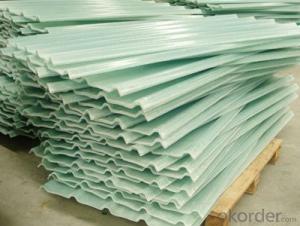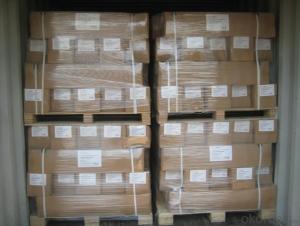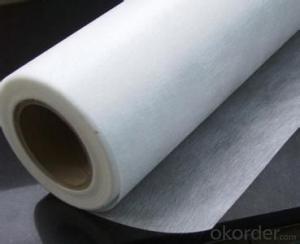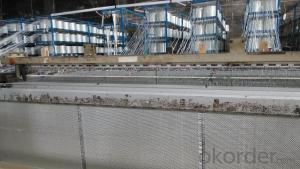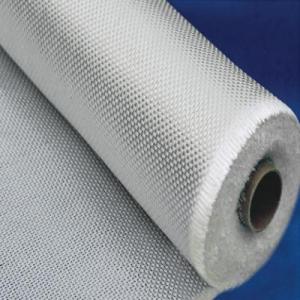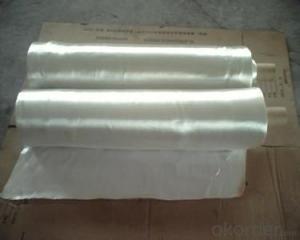Fiberglass Pvc Roller Blinds Fabric for Composite Fiberglass Fabrics Building
- Loading Port:
- Shanghai Port
- Payment Terms:
- TT or LC
- Min Order Qty:
- 10000 M2 m²
- Supply Capability:
- 50000000 M2 Per Year m²/month
OKorder Service Pledge
OKorder Financial Service
You Might Also Like
Introduction of Composite Fiberglass Fabrics:
1. Description & Keyword:
Keywords: fibergalss fabric, fsk, foil scrim kraft, foil scrim kraft paper, foil scrim kraft facing
Alkaline-resistant fiberglass fabrics as backing brings us a stronger and ductile malleable laminates.
2. Structure & Benefits:
With degradable Mylar film as exposure surface, this products supply better reflection.
Application of Composite Fiberglass Fabrics:
[1]. Pack the air-conditioning outlet
[2]. Could be cut to wrap around the glass wool in different sizes for inserting between the main body and the inner body of the subway wagons, for insulating against temperature and sound .
[3]. As vapor barrier or moisture proof.
Relatived Similar products guide of Composite Fiberglass Fabrics:
FG701: use aluminum foil instead of the aluminum coated film (Mylar film) in FG701.
FGS701: additional layer of 7micron aluminum foil was applied to FGS701
FG701T: self adhesive tape, easy to install, because of the application of pressure sensitive adhesive, two types we supply: one could endure temperature from -10degree centigrade to 60DC, another one could standing from -10DC to 100DC.
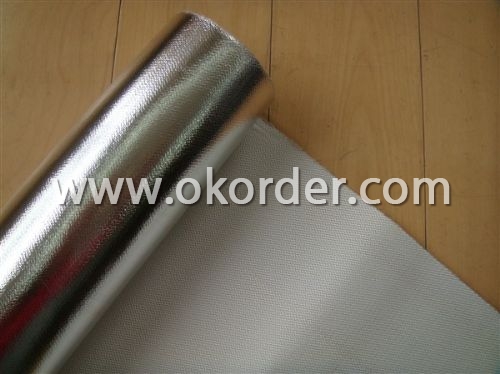
- Q: Is fiberglass fabric resistant to termites?
- Termites do not spare fiberglass fabric when it comes to their voracious appetite for organic materials like wood, paper, and fabric. Although fiberglass fabric may not be the ideal feast for termites, they can still wreak havoc on it by chewing through or using it as a gateway to other materials. Hence, safeguarding fiberglass fabric from termite infestation is crucial. Employing termite barriers, conducting routine inspections, and treating the vicinity for termites, if needed, are all necessary precautions to undertake.
- Q: Can fiberglass fabric be used for reinforcement in sporting equipment?
- Yes, fiberglass fabric can be used for reinforcement in sporting equipment. Its high strength-to-weight ratio, flexibility, and durability make it a popular choice for reinforcing various sports equipment such as tennis rackets, fishing rods, and hockey sticks.
- Q: How is fiberglass fabric used in the production of fire-resistant blankets?
- Fiberglass fabric is used in the production of fire-resistant blankets as it provides excellent thermal insulation properties and is highly resistant to heat and flames. The fabric is woven using fine glass fibers that create a strong and durable material capable of withstanding intense heat. When used in fire-resistant blankets, fiberglass fabric helps to create a protective barrier that can shield individuals or objects from the dangers of fire, providing a crucial layer of safety and protection.
- Q: How is fiberglass fabric used in the production of insulation panels?
- Fiberglass fabric is commonly used in the production of insulation panels due to its excellent thermal insulation properties and durability. It is woven from glass fibers and provides a lightweight yet strong material that is highly resistant to heat, moisture, and chemicals. In the production of insulation panels, fiberglass fabric is typically used as the primary insulation material. It is usually layered between two facing materials to create a sandwich-like structure. The facing materials can be made of various materials such as aluminum foil, paper, or other fabrics. The fiberglass fabric acts as the core insulation layer, providing a barrier to heat transfer. Its unique composition traps air pockets within its fibers, which significantly reduces the conduction of heat. This results in excellent thermal insulation properties, making it a preferred choice for insulation panels. Furthermore, fiberglass fabric is also used as a reinforcing component in insulation panels. It adds strength and stability to the panels, preventing them from sagging or losing their shape over time. This reinforcement ensures that the insulation panels maintain their insulating properties even when exposed to external pressures or vibrations. Additionally, fiberglass fabric is known for its fire-resistant properties. It does not burn or release toxic gases when exposed to fire, making it a safe and reliable choice for insulation panels. This is crucial in ensuring the overall safety of buildings, as it helps prevent the spread of fire and provides valuable time for evacuation. Overall, fiberglass fabric plays a vital role in the production of insulation panels by providing excellent thermal insulation, reinforcement, and fire resistance. Its versatility and durability make it an ideal material for various applications, from residential buildings to industrial facilities, contributing to energy efficiency and comfort.
- Q: How do fiberglass fabrics perform in terms of abrasion resistance?
- Fiberglass fabrics are known for their exceptional abrasion resistance properties. Due to the nature of the material, which consists of fine fibers of glass woven together, they offer high resistance to wear and tear caused by rubbing or scraping against rough surfaces. This makes fiberglass fabrics highly durable and suitable for applications that require protection against abrasion, such as industrial and automotive sectors. Additionally, fiberglass fabrics often have a smooth surface finish, further enhancing their ability to withstand friction and maintain their integrity over time. Overall, fiberglass fabrics are considered to be excellent performers in terms of abrasion resistance.
- Q: Can fiberglass fabric be used for clothing?
- Indeed, fiberglass fabric has the potential to serve as clothing material, but it is not widely embraced or favored for everyday attire. The primary application of fiberglass fabric lies within the aerospace, automotive, and construction industries, as it possesses exceptional attributes. Specifically, it is renowned for its remarkable strength, durability, and resistance to heat. While these qualities render fiberglass fabric suitable for protective clothing in specific professional settings, such as firefighting or welding, it does not fare well as regular clothing due to its rigidity and potential discomfort when in contact with the skin. Furthermore, fiberglass fabric lacks breathability and insulation, further limiting its appropriateness for clothing purposes. Instead, materials like cotton, wool, silk, as well as synthetic fibers such as polyester or nylon, are more commonly utilized for clothing due to their comfort, breathability, flexibility, and aesthetic appeal. These materials offer a broader array of options for fashion and everyday wear, while still ensuring the wearer's comfort and protection.
- Q: Is fiberglass fabric resistant to mold or mildew growth?
- Yes, fiberglass fabric is resistant to mold or mildew growth. The material itself is non-porous and does not provide a suitable environment for mold or mildew to grow. Additionally, fiberglass fabric is often coated with a protective finish that further enhances its resistance to mold and mildew. This makes fiberglass fabric a popular choice for applications where moisture resistance is important, such as boat covers, outdoor furniture, and shower curtains. However, it is important to note that while the fabric itself may be resistant to mold and mildew, other factors such as moisture levels and proper maintenance can still contribute to the growth of mold or mildew on the surface of the fabric.
- Q: Is fiberglass fabric suitable for aerospace applications?
- Yes, fiberglass fabric is suitable for aerospace applications. It is known for its lightweight, high strength, and excellent thermal resistance, making it ideal for various aerospace components such as aircraft interiors, insulation, and structural elements. Additionally, fiberglass fabric has good resistance to chemicals and fatigue, further enhancing its suitability for aerospace use.
- Q: How does fiberglass fabric perform in high-pressure applications?
- Fiberglass fabric is known for its exceptional performance in high-pressure applications. Due to its inherent strength and durability, fiberglass fabric can withstand high levels of pressure without compromising its structural integrity. The tightly woven fibers of fiberglass fabric provide excellent resistance to stretching, tearing, and bursting, making it an ideal choice for applications that involve high-pressure environments. One of the key advantages of fiberglass fabric in high-pressure applications is its ability to maintain dimensional stability even under extreme pressure. Unlike other materials that may deform or lose their shape, fiberglass fabric retains its form and strength, ensuring consistent performance over time. This stability is crucial in industries such as aerospace, oil and gas, and automotive, where high-pressure conditions are common. Additionally, fiberglass fabric has high chemical resistance, making it suitable for applications that involve exposure to corrosive substances or harsh environments. It can withstand the effects of various chemicals, acids, solvents, and even extreme temperatures, ensuring its longevity and reliability in high-pressure settings. Moreover, fiberglass fabric offers excellent thermal insulation properties, which can be advantageous in high-pressure applications where temperature control is crucial. It can effectively resist heat transfer, preventing energy loss and maintaining the desired temperature within the system. In summary, fiberglass fabric performs exceptionally well in high-pressure applications due to its strength, dimensional stability, chemical resistance, and thermal insulation properties. Its ability to withstand high levels of pressure without compromising its structure makes it an ideal choice for industries that operate in demanding environments.
- Q: How do fiberglass fabrics compare to other types of fabric in terms of strength and durability?
- Fiberglass fabrics are highly regarded for their remarkable strength and durability, making them a favored option in multiple industries. In comparison to alternative fabric types, fiberglass stands out due to its unique attributes. To begin with, fiberglass fabrics possess outstanding tensile strength, which refers to their ability to resist stretching or breaking under tension. This strength surpasses that of most natural or synthetic fabrics by a significant margin. As a result, fiberglass fabrics are highly resistant to tearing and can withstand heavy loads without compromising their integrity. This renders them ideal for applications that require strength and durability, such as in the construction, automotive, and aerospace sectors. Moreover, fiberglass fabrics exhibit exceptional resistance to abrasion, chemicals, and extreme temperatures. These fabrics have a low coefficient of thermal expansion, meaning they do not expand or contract significantly when exposed to temperature fluctuations. This characteristic allows fiberglass fabrics to maintain their structural integrity even in extreme environments, including high heat and cold. Additionally, fiberglass fabrics are highly resistant to chemical corrosion, making them suitable for use in corrosive or acidic environments. Furthermore, fiberglass fabrics offer exceptional dimensional stability. Unlike certain other fabrics that may shrink or stretch over time, fiberglass fabrics retain their shape and size even under prolonged stress or exposure to moisture. This characteristic ensures the longevity and reliability of fiberglass fabric products. Overall, fiberglass fabrics demonstrate superior strength and durability when compared to other fabric types. Their high tensile strength, resistance to abrasion, chemicals, and extreme temperatures, as well as excellent dimensional stability, make them a dependable choice for various applications where strength and longevity are crucial.
1. Manufacturer Overview
| Location | Shandong, China |
| Year Established | 2002 |
| Annual Output Value | Below US$1 Million |
| Main Markets | North America; South America; Eastern Europe; Southeast Asia; Africa; Oceania; Mid East; Eastern Asia; Western Europe; Central America; Northern Europe; Southern Europe; South Asia |
| Company Certifications | ISO 9001:2000 |
2. Manufacturer Certificates
| a) Certification Name | |
| Range | |
| Reference | |
| Validity Period |
3. Manufacturer Capability
| a) Trade Capacity | |
| Nearest Port | Qingdao Port |
| Export Percentage | 81% - 90% |
| No.of Employees in Trade Department | Above 10 People |
| Language Spoken: | English; Chinese; |
| b) Factory Information | |
| Factory Size: | Above 10,000 square meters |
| No. of Production Lines | Above 10 |
| Contract Manufacturing | Design Service Offered; Buyer Label Offered |
| Product Price Range | High; Average |
Send your message to us
Fiberglass Pvc Roller Blinds Fabric for Composite Fiberglass Fabrics Building
- Loading Port:
- Shanghai Port
- Payment Terms:
- TT or LC
- Min Order Qty:
- 10000 M2 m²
- Supply Capability:
- 50000000 M2 Per Year m²/month
OKorder Service Pledge
OKorder Financial Service
Similar products
Hot products
Hot Searches
Related keywords
